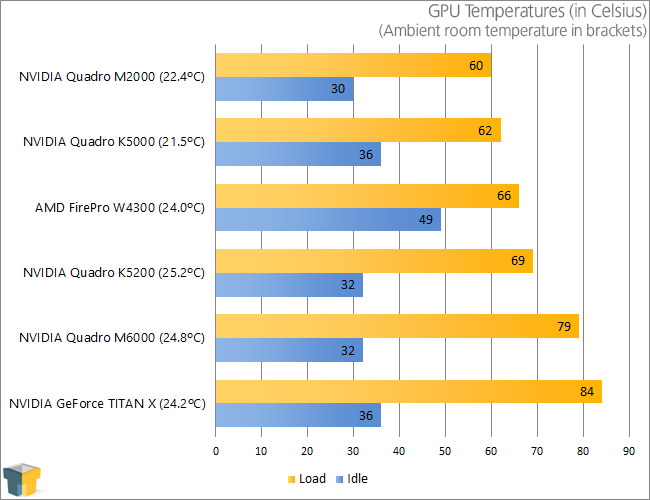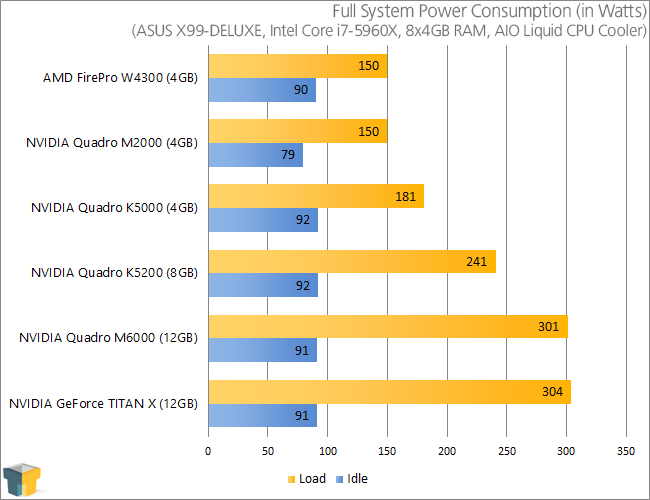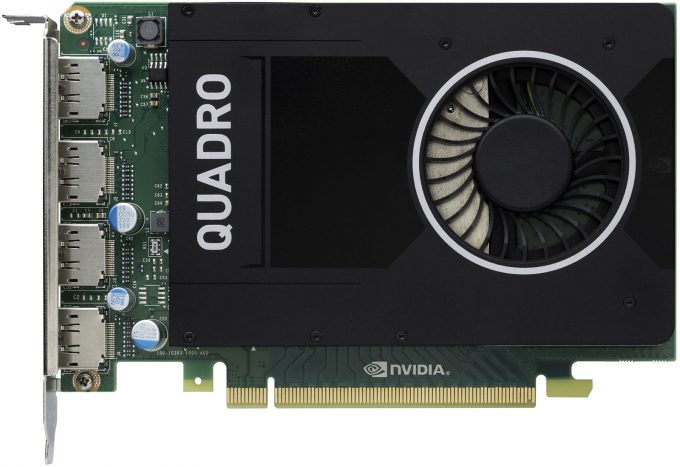- Qualcomm Launches Snapdragon 4 Gen 2 Mobile Platform
- AMD Launches Ryzen PRO 7000 Series Mobile & Desktop Platform
- Intel Launches Sleek Single-Slot Arc Pro A60 Workstation Graphics Card
- NVIDIA Announces Latest Ada Lovelace Additions: GeForce RTX 4060 Ti & RTX 4060
- Maxon Redshift With AMD Radeon GPU Rendering Support Now Available
Maxwell Quadro For All: NVIDIA Quadro M2000 Workstation Graphics Card Review

To those who’ve been waiting for a mid-range Maxwell Quadro to come along: your wait is over. To help wrap up its Maxwell-based lineup, NVIDIA’s Quadro team has released the ~$500 M2000. This card is largely targeted at CAD users and those with lighter 3D design needs, and promises to be much more efficient – and faster overall – than its predecessor. We gave the card a thorough test to see just how true that is.
Page 7 – Power, Temperatures & Final Thoughts
To test workstation graphics cards for both their power consumption and temperature at load, we utilize a couple of different tools. On the hardware side, we use a trusty Kill-a-Watt power monitor which our GPU test machine plugs into directly. For software, we use LuxMark to stress the card, and GPU-Z to record the temperatures.
To test, the area around the chassis is checked with a temperature gun, with the average temp recorded. Once that’s established, the PC is turned on and left to sit idle for five minutes. At this point, we open GPU-Z along with LuxMark. After its initial (automatic) render is complete, we kick off a 15 minute stress-test. Following this, we monitor the Kill-a-Watt for a minute to establish peak load wattage.


Finally – here’s a set of tests that put the M2000 ahead of everything else. The card even managed to shave 11W off of the PC’s idle power draw, becoming the only card to dip below 90W. From a temperature standpoint, the W4300 peaked at 6°C higher than the M2000, but idled at a staggering 19°C higher, thanks to its simpler cooler design. Both of these cards peaked at 150W during load.
Final Thoughts
Does NVIDIA’s final Maxwell-based Quadro deliver the punch we were hoping? That depends on your perspective. Compared to the Quadro K5000, which was released four years ago for more than four times the price of the M2000, the newest Quadro is downright incredible. Compared to AMD’s FirePro W4300, which sells (right now) for $300? That depends on the test.
Overall, the M2000 is without question faster than the W4300. There were only a couple of scenarios where AMD’s struck ahead, and more often than not, NVIDIA’s card vastly outperformed it. It outperformed it in our rendering tests, our CAD tests, and even our gaming tests.
Whether the M2000 or W4300 is better-suited for you will depend entirely on what you’re going to use the card for. Our results exist to help you make sure that the card you’re choosing is going to deliver the best possible performance in that particular scenario, and at that particular price point.
With a general look at performance, the M2000 wipes the floor with the W4300 – as it should for a card that costs 66% more (at least, per SRP). Even with the price delta, M2000 sets itself as the far more powerful option, and if the card does in fact end up hovering around ~$400, its appeal is only going to increase, versus AMD’s immediate competition.
At the end of the day, and as mentioned above, your need for a workstation card will differ based on what you’re using it for. If you want the fastest under $500 workstation graphics card today, NVIDIA’s Quadro M2000 is it.
Pros
- An affordable Maxwell Quadro.
- Offers great creative performance at its price-point. Handily beats AMD’s FirePro W4300.
- Power efficient (75W); doesn’t breach 60°C at load in a normal system.
- No power connector required. Will fit into many different form-factors.
- Supports 4x 4K/60Hz displays (or 1x 5K/60Hz).
- Includes 4x DisplayPort connections. Supports NVENC encode, HEVC decode, NVIDIA Mosaic, and NVIDIA nView.
Cons
- Double-precision performance is not as good with Maxwell as it was for Kepler.
Support our efforts! With ad revenue at an all-time low for written websites, we're relying more than ever on reader support to help us continue putting so much effort into this type of content. You can support us by becoming a Patron, or by using our Amazon shopping affiliate links listed through our articles. Thanks for your support!






